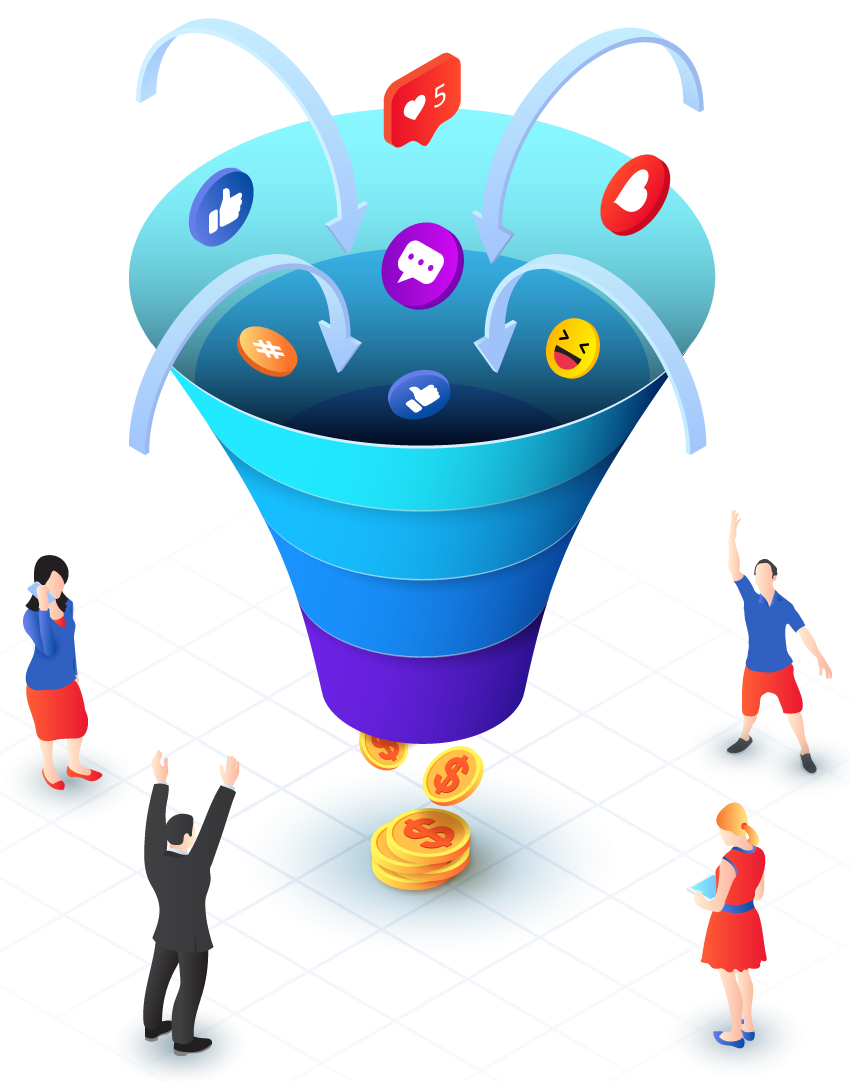How Sales Funnels Can Transform Your Customer Acquisition
A sales funnel details the process by which potential buyers become loyal customers. However, a funnel isn’t one-size-fits all and needs to be optimized continuously. It is a complex process that involves the integration of multiple marketing channels and tactics that must be coordinated by both sales and marketing teams.
The first step in creating a customer acquisition funnel is identifying the target audience’s goals, needs, and frustrations. This requires thorough market research that goes well beyond demographic data. Interviews and surveys are useful, but observational methods like user behavior tracking, video recording and analysis, and heatmaps can help you understand your audience’s experience and reveal hidden obstacles to conversion.
Once you’ve understood your target audience, the next step in creating a sales funnel is determining the right message and offer to attract them. This is a critical factor that determines the success or failure of your business. The best way to make sure you’re using the right message is to test your content and offers with different audiences. Use A/B testing and multivariate testing to discover which messages and offers work best to move prospects through the funnel.
During the Consideration stage, potential customers are actively seeking information about your product or service. They may visit your website, follow your social media accounts, or sign up for your newsletter. At this stage, marketers focus on creating engaging, informative content that helps potential buyers evaluate your product and how it meets their needs. This could include educational blog posts, videos, or product demonstrations.
In the final stage, known as Conversion, a prospect becomes a paying customer. At this point, it’s important to ensure a smooth purchase experience and excellent customer service. This will increase customer satisfaction, retention, and loyalty. Marketing strategies at this stage include automated thank-you emails, loyalty programs, and post-purchase surveys.
While a sales funnel ends with the sale, the true measure of your company’s success is how many of your new customers return to buy again. The more you can retain customers, the less you’ll spend on customer acquisition in the future. This is why it’s crucial to track and analyze metrics like churn rate and customer lifetime value (CLTV).
Once you have your customer acquisition funnel in place, you need to continuously monitor its performance and optimization. Identifying blockage points and improving your strategy will improve your overall conversion rates. For example, you might find that newsletter leads convert at a higher rate than cold calls or that PPC campaigns perform better with certain keywords. This insight will allow you to refine your strategies and create an optimal customer acquisition funnel.
When building a sales funnel, start with your most effective channel and optimize it. Then, once you have a strong ROI, add additional channels. Be aware that the more channels you add to your funnel, the more you may need to adjust your messaging and offers for each channel. It is a delicate balance to strike that can only be achieved through continuous experimentation and learning from your analytics.

Learn how To build sales funnels
Subscribe To My Email List And Get Updates On Building Effective Sales Funnels That Generate Leads & Sales In Your Business.
My Recent Posts
All-in-One Sales Automation Platform
Check out my recent post on all-in-one sales and marketing tools and what I think of it.
Sales Funnels
Check out my recent post on sales funnels and what I think about them. Are they still worth it?

Jay Pressman is a seasoned Internet Marketer with over two decades of IT experience in healthcare. He is passionate about providing high-quality tools to website designers, Internet Marketers, and Entrepreneurs.
Having fallen victim to scams and false promises from self-proclaimed "Gurus," Jay is committed to offering only reliable and effective resources.
Join his newsletter for valuable insights, tips, and recommendations to navigate the world of internet marketing and web development with confidence.
Jay Pressman
©Copyright 2024 Magic Web Maker
9560 Queens Blvd, Unit #2100
Rego Park, NY 11374
